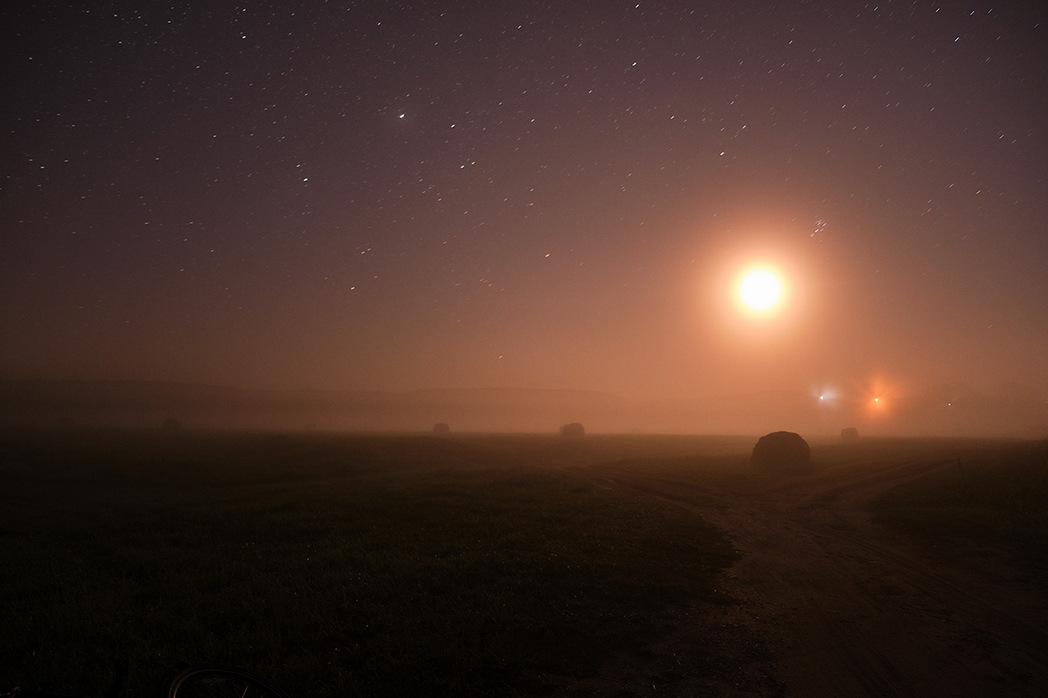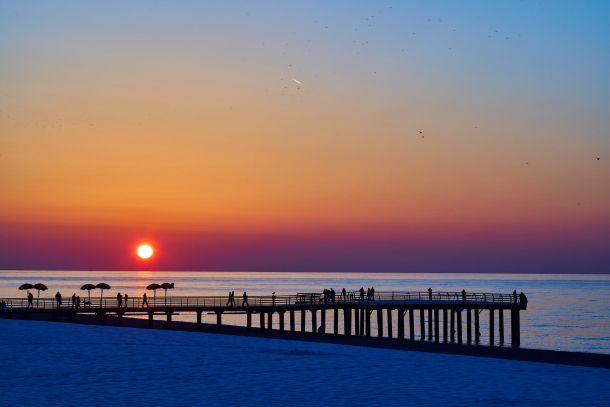Star trails in rural Belarus
Star trail photography has always been on my mind to try it. So when I had managed to get to the rural Belarus where stars and the Milky Way are very bright usually, I decided to do it at last.
On that day the weather was nice and clear throughout the day until the same evening. When the darkness fell, I grabbed the Fujifilm X-T3 camera with the Fujinon XF18-55mm/f2.8-4 OIS zoom lens and my bicycle. I headed to the local river valley.
The valley, surrounded and somewhat squeezed by a lot of high hills, was already full of fog which is quite predictable with the weather on that day. There is the bridge crossing the local river with heavy truck traffic at night.

View to the bridge with traffic trails and the moon to the left
(ISO 1000, 60 sec, f/2.8, 18mm)
So I set up my National Geographic tripod with the camera on it facing the bridge covered in the fog and the sky already filled with stars.
I made a couple of test shots with the following settings: ISO 320, f 2.8, 60 sec. As I learned after the shooting, the shutter setting was a bit too long for that particular scene. I considered the test shots quite OK. So I set up the built-in intervalometer (yeah, the Fujifilm X-T3 has one) for 56 shots with a gap of 1 sec. That's roughly 60 min of waiting for the shooting to complete.
The fog clubbing in the light of a torchlight
While I was waiting, I made a couple of videos and shots with my phone (the Google Pixel 3). Well, not that they are the super quality ones but it's fun to play with e.g. the astrophotography mode of the Pixel 3.
When the shooting had been completed, I decided to make some other pictures of the surroundings. Frankly speaking, there were a lot of interesting scenes. Here are some of those photos.

The tree in the fog (ISO 1600, 60 sec, f/2.8, 18mm)

The waning moon in the fog (ISO 320, 60 sec, f/2.8, 18mm)

The Milky Way stars (ISO 1250, 40 sec, f/2.8, 20mm)
Now to the final star trail image which is mostly failed. Like I said, the shutter setting is too long for a scene with heavy traffic facing the camera. So as the result, some photos of the series have overexposed parts that impact the final stacked star trail in a negative way.

The final stacked photos of star trails (ISO 320, 60 sec, f/2.8, 18mm, 56 photos combined)



